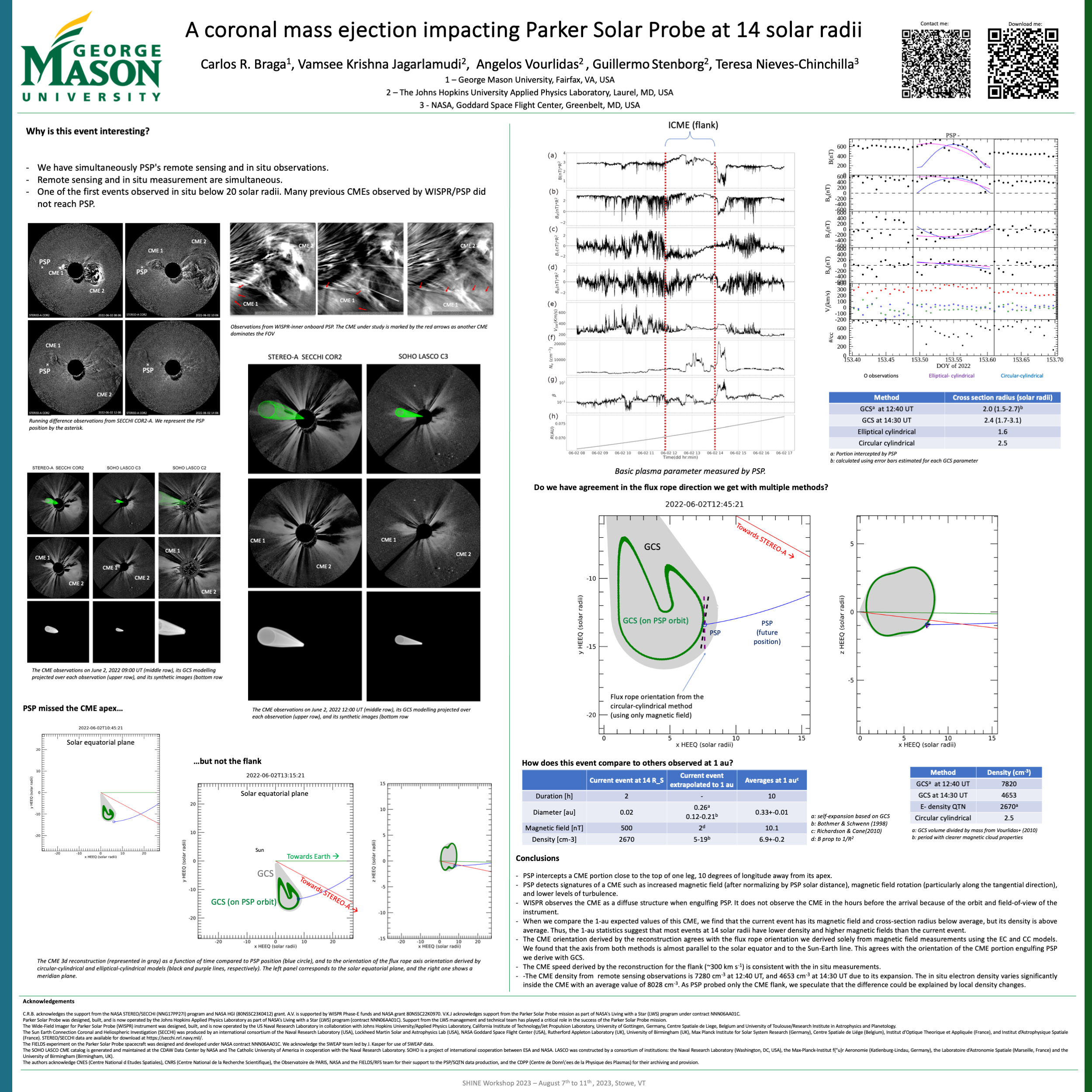Authors: Carlos R. Braga (George Mason University), Vamsee Krishna Jagarlamudi (JHUAPL), Angelos Vourlidas (JHUAPL), Guillermo Stenborg (JHUAPL), Teresa Nieves-Chinchilla (NASA, Goddard Space Flight Center)
Despite extensive studies, the relationship between the CME properties in the corona and their interplanetary counterparts is not totally understood. Until recently, a wide spatial gap existed between the two regions, which prevented us from disentangling the spatial and temporal evolution of CMEs. NASA’s Parker Solar Probe (PSP) imaged multiple CMEs since its launch in 2018, but these events either intercepted the spacecraft far from the corona or completely missed it. Here we describe the first CME observed simultaneously by remote sensing and in situ, and we compare its properties, such as orientation, cross-section, density, and speed. The CME encounter happens on June 2, 2022, while PSP is around 14 solar radii from the Sun center. We reconstruct the CME with forward modeling and determine its morphology and kinematics. The result suggests that PSP misses the CME apex but encounters its flank. The encounter time matches the period where multiple in situ measurements from PSP indicate a CME. We also derive the flux rope diameter and orientation using the in-situ magnetic field measurements, and they are consistent with the CME reconstruction from the imaging data. The close agreement between remote sensing and in-situ analysis suggests that the discrepancies found in past studies are more likely associated with the CME temporal evolution.


